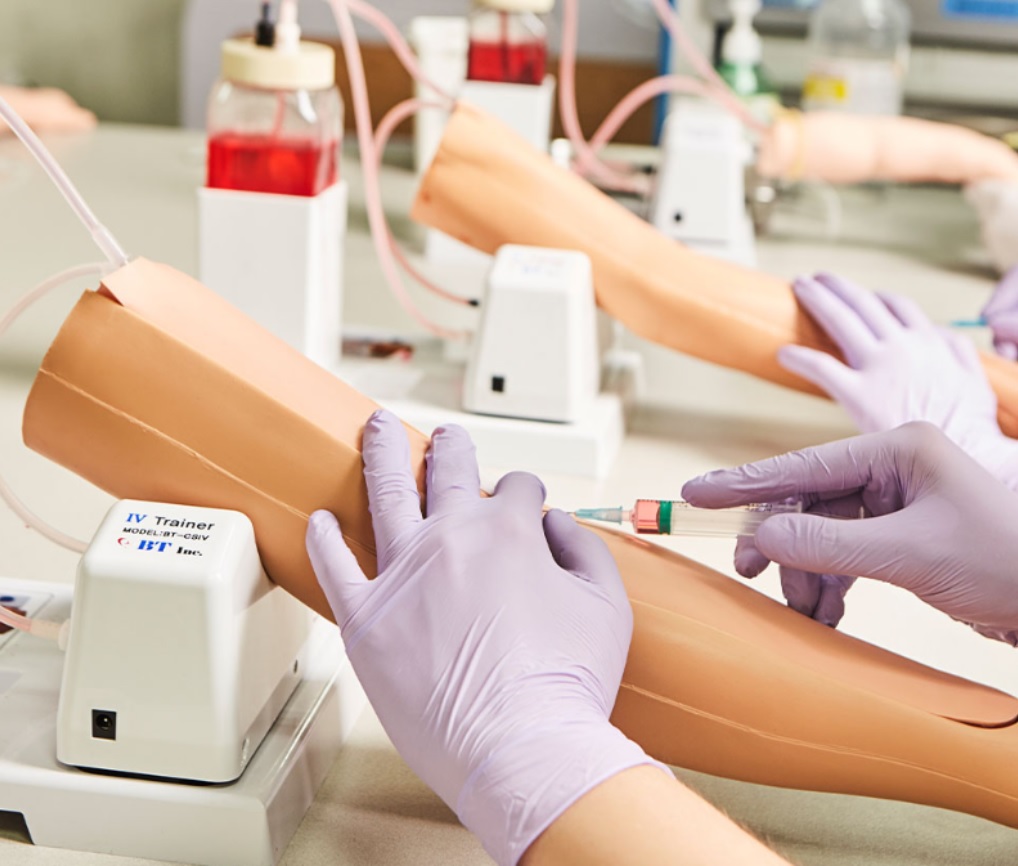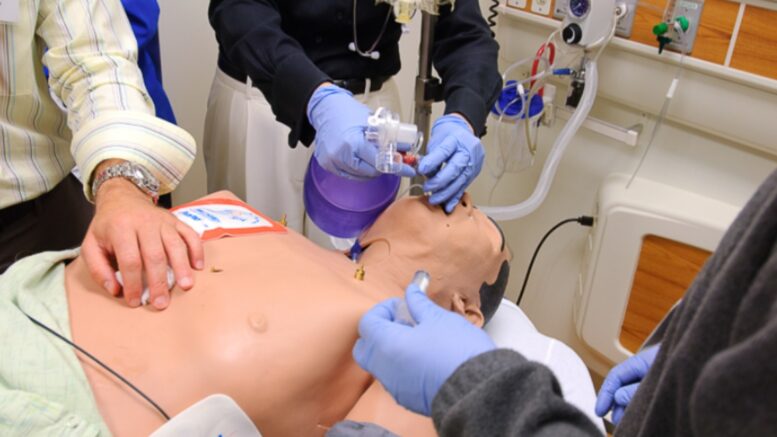With advanced technology, realistic patient simulators, and virtual environments, simulations create a safe space for healthcare professionals to hone their skills. These training experiences replicate real-life scenarios, allowing you to immerse yourself in the challenges and complexities of healthcare practise. They help you apply your theoretical knowledge, practise clinical techniques, and navigate the complexities of patient care. So, put on your lab coat and get ready to learn about the impact that these techniques have on healthcare education and patient safety!
What’s the Goal of a Medical Simulation?
These exercises are a way to bridge the gap between theory and practise, helping you refine your abilities, make critical decisions, and hone your teamwork skills. At its core, the goal of this innovative training method is to simulate real-life situations as closely as possible. They replicate the complexity and challenges of healthcare settings, so you can develop essential skills, such as clinical reasoning, communication, and crisis management, in a safe and controlled environment.
The objective is to create an immersive experience that mirrors the unpredictability of real patient encounters. When you engage in these realistic simulations, you can refine your technical skills, such as performing procedures, administering medications, and using medical equipment effectively. You can also develop non-technical skills, including communication, teamwork, leadership, and decision-making under pressure. It’s about creating a well-rounded healthcare provider who not only delivers excellent clinical care but also excels in complex and high-stakes situations.
Another vital aspect of patient simulations is debriefing. After participating in a simulated scenario, healthcare professionals engage in debriefing sessions. These sessions offer an opportunity to reflect on the experience, identify areas for improvement, and learn from both successes and mistakes. This practice enhances self-awareness, promotes critical thinking, and creates a culture of continuous learning and professional growth.
What Kind of Equipment Do You Need?
You’ll need a range of equipment for medical simulations to create a realistic and immersive training environment. First, a high-fidelity mannequin is at the heart of simulations. These advanced dolls mimic human physiology and respond to interventions, just like real patients. They come in various levels of complexity, ranging from basic models to sophisticated ones that closely replicate human anatomy and physiology. To monitor and control these mannequins, you’ll need a control console or software interface. This allows you to adjust vital signs, symptoms, and responses to interventions in real-time.

Apart from medical mannequins, you’ll also need medical equipment and supplies. These include items like stethoscopes, blood pressure cuffs, syringes, IV catheters, and various other tools and instruments. Having access to these supplies helps you practise hands-on skills, perform procedures, and familiarise yourself with the equipment you’ll encounter in a real clinical setting.
Props and furniture enhance the immersive experience. This can include carts, hospital beds, exam tables, diagnostic equipment, and even simulated clinical settings such as an operating room or an emergency department. These environmental elements help healthcare providers acclimate to the physical space and navigate their actions accordingly.
Which Fields Benefit from Medical Simulations?
Hands-on exercises are a valuable tool across various fields within the healthcare industry, revolutionising the way healthcare providers learn and develop their skills:
First, medical students and residents greatly benefit from medical simulation training. As they embark on their journey to become physicians, simulations offer a safe environment to practice their skills, refine decision-making abilities, and gain confidence in handling real-life scenarios. Simulations help them bridge the gap between theory and practice and prepare them to provide competent and compassionate care when they step into a clinical setting;
Emergency medicine and critical care are fields that heavily rely on simulations. These fast-paced and high-stress environments require healthcare professionals to make split-second decisions and perform life-saving interventions. Simulations allow emergency physicians, paramedics, and critical care teams to practice managing complex scenarios, improve their teamwork dynamics, and enhance their ability to handle emergencies with efficiency and precision;
Surgical training also has significant advancements through patient simulations. Surgeons and surgical residents can use these exercises to practice surgical techniques, refine their hand-eye coordination, and improve their performance in the operating room. They offer a risk-free environment where surgeons can master complex procedures, explore new surgical technologies, and improve their understanding of anatomical structures;
Anaesthesiologists and nurse anaesthetists use simulations to practice administering anaesthesia, manage complications, and develop critical decision-making skills. Simulated scenarios allow them to refine their ability to monitor patients’ vital signs, respond to emergencies, and ensure safe anesthesia delivery;
Nursing education is another field that greatly benefits from simulations. Nursing students can engage in realistic scenarios that mirror the challenges they will encounter in their future careers. Simulations help them develop critical thinking skills and practice effective communication and collaboration within the healthcare team.
Studying Theory Isn’t Enough
While textbooks and lectures provide a solid foundation of knowledge, hands-on training helps you truly excel in your practice. Imagine a doctor who’s spent years studying anatomy, physiology, and medical principles but has never set foot in a hospital or clinic. Would you feel comfortable trusting them with your health? Probably not. That’s because medicine is a highly practical field that requires doctors to apply their knowledge and skills in real-life scenarios.
Hands-on training helps you apply theoretical concepts in a controlled and supervised setting. It’s in the experience that healthcare professionals grasp the intricacies of patient care, medical procedures, and the complex decision-making that occurs in real-time. They learn how to translate textbook knowledge into practical actions that directly impact patient outcomes.
But hands-on training also enhances critical thinking and problem-solving abilities. In real-life healthcare settings, situations are often unpredictable and challenging. Practical training immerses you in simulated scenarios that mirror these real-life challenges. You’ll learn how to assess situations, make decisions under pressure, and adapt to evolving circumstances. It’s about developing the ability to think on your feet and provide the best possible care to patients.
Bottom Line
Using high-fidelity patient simulators, realistic scenarios, and debriefing sessions, simulations create a dynamic learning environment that mirrors the challenges healthcare professionals face in their daily practice. It’s a transformative journey that prepares them to provide the best possible care to their patients.
So, whether you’re a medical student starting your journey, a seasoned professional seeking to refine your skills, or part of a team that aims to improve collaboration, simulations offer a powerful tool for continuous learning and improvement!
